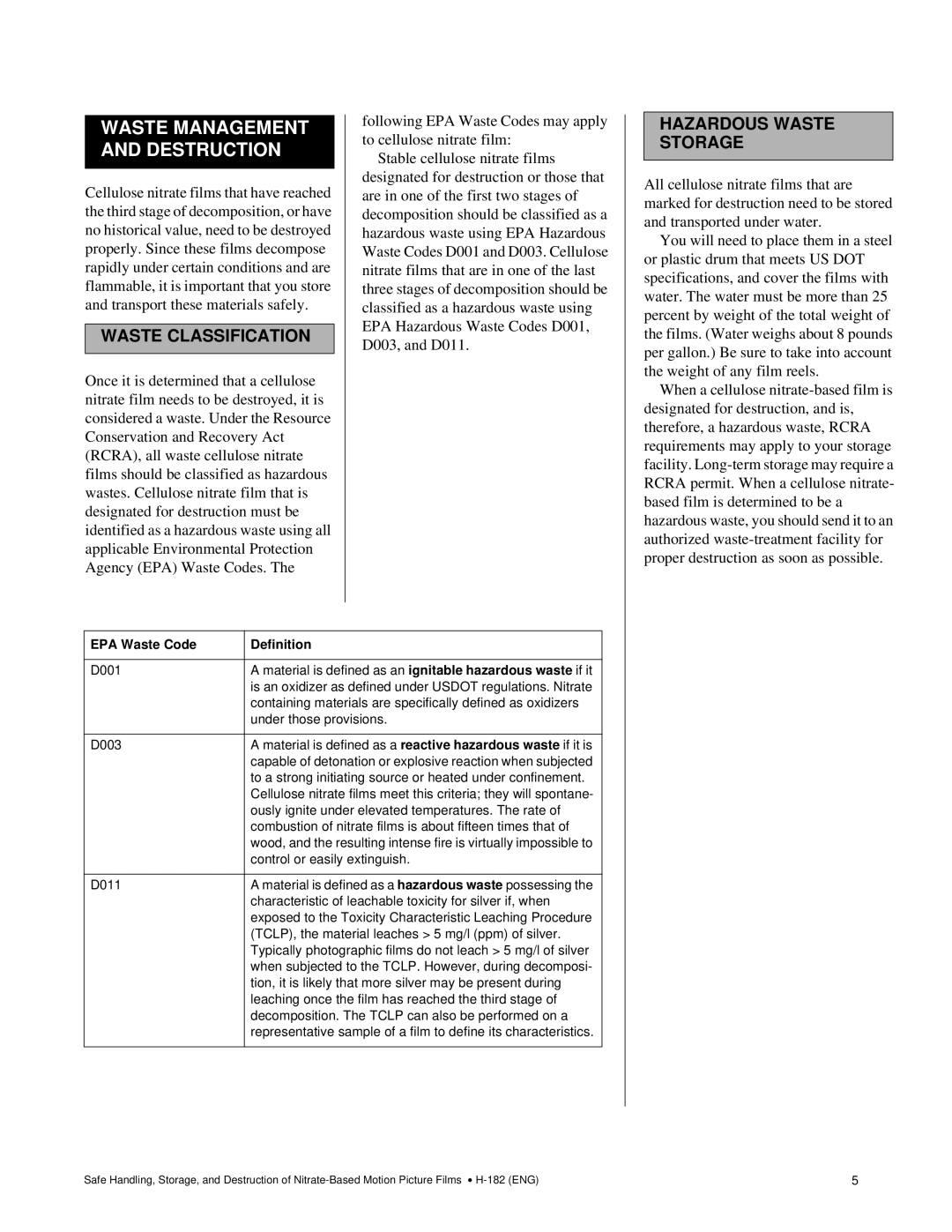H-182 (ENG)2 specifications
The 3D Innovations H-182 (ENG)2 is a state-of-the-art 3D printer designed for high-precision and reliable additive manufacturing. This advanced model is tailored for a wide range of applications, from prototyping to small-scale production, making it a versatile tool for engineers, designers, and hobbyists alike.One of the main features of the H-182 (ENG)2 is its large build volume, which allows users to print substantial objects without the need for assembly. The printer boasts dimensions of 300mm x 300mm x 400mm, making it suitable for creating complex geometries and detailed prototypes. Furthermore, the dual extruder system offers added flexibility by enabling the use of multiple materials in a single print. This feature is particularly beneficial for projects that require different material properties, such as flexibility and rigidity, or require support structures that can easily be removed.
The H-182 (ENG)2 is equipped with cutting-edge technology, including an advanced heated bed that ensures consistent adhesion and reduces warping during the printing process. This feature significantly enhances the overall quality of printed parts, offering superior surface finish and dimensional accuracy. Additionally, the printer utilizes a high-resolution LCD screen and an intuitive user interface, making it easy for users to monitor and control their printing tasks.
For those prioritizing ease of use, the H-182 (ENG)2 supports a variety of file formats, allowing for seamless integration with popular slicing software. The printer's compatibility with both PLA and ABS filaments gives users the option to choose materials that best suit their project requirements. Moreover, its closed-frame design minimizes contamination from environmental factors, providing a stable printing environment.
Energy efficiency is another notable characteristic, as the H-182 (ENG)2 is designed to consume less power compared to traditional 3D printers without compromising performance. This makes it an eco-friendly choice for users aiming to reduce their carbon footprint.
In conclusion, the 3D Innovations H-182 (ENG)2 stands out as a powerful and flexible 3D printing solution. With its impressive build volume, dual extruder capabilities, user-friendly interface, and energy-efficient design, it caters perfectly to the evolving needs of modern manufacturing, ensuring that creativity is never limited by technology.

